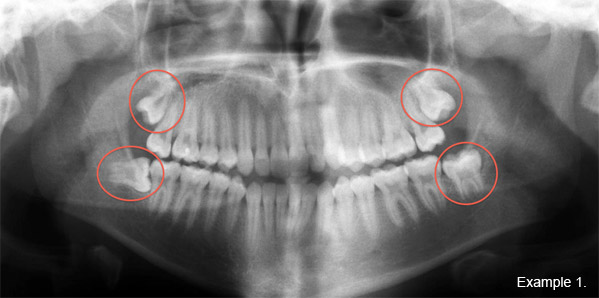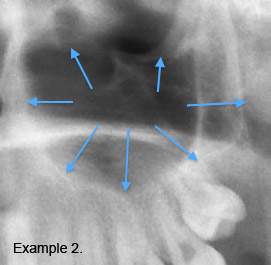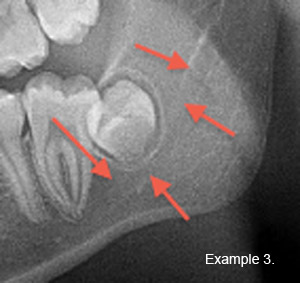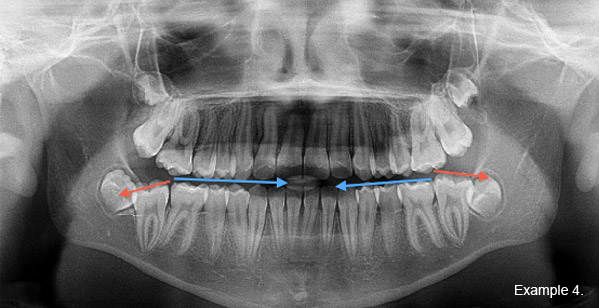We work with the best specialists in San Diego. I have been in practice in Carlsbad for over thirty years and have had the opportunity to see the work done by dental specilatists from all around San Diego. We work with the best of the best; specialists that we have seen produce the best results and treat our patients with the same care and concern we do. I have asked some of our specialists to help us by addressing questions and concerns that patients often have by writing short blog answers to these questions. Our first guest specialist is Dr Jon Shafqat, an oral surgeon who addresses the question: “ When should I get my wisdom teeth evaluated?”
Optimal Timing For Evaluation
The factors that determine optimal timing for evaluation of wisdom teeth or third molars are; jaw growth, bone density, level of eruption, root development, and problems associated with adjacent teeth.
Most growth of the jaws is completed in females by age 15, and in males by 18 years of age. A panorex film (an x-ray where the machine rotates around your head), will give the dentist or oral surgeon a panoramic view of the upper and lower jaws. It will show how much room is available for the wisdom teeth. The x-ray will also show if there is pathology associated with the third molars.
As for bone density, the mineralization of the jaws is a gradual process, but most of the change from soft, compressible bone to dense hard bone occurs between 19 and 21 with bones reaching maximum density at age 25. For surgical purposes, the bone is still flexible at age 17 which makes for a much easier surgical procedure.

This panorex film of a 17 year old patient, in example 1, shows inadequate room for the wisdom teeth. The roots haven’t yet fully developed and the teeth are as close to the surface as they will likely erupt before the roots finish growing. This x-ray illustrates the need for extraction due to space issues as well as the optimal time for the third molars to be removed.

Less Development, Less Risk
Example 2 is a close up view from the panorex in the first example. The blue lines illustrate the margins of the maxillary sinus. Without complete development of the roots of this wisdom tooth, there is less risk for a communication with the sinus following extraction. This risk is also less of an issue when bones are still flexible.

More Development, More Risk
Example 3. The arrows show the margins of the canal where the inferior alveolar nerve passes under the roots of lower teeth. The roots of this third molar, if fully developed, would curve around this nerve, increasing the risk of damage.

In example 4, above, the lower third molars are crowding the teeth in front of them. The blue line illustrates where the teeth meet, also called the occlusal plane. Notice how the second molars are tilted down and back; not in line with the other teeth or occlusal plane.
It will be necessary to remove these wisdom teeth so the orthodontist can upright the second molars. If the second molars were left in this position, they would be difficult to clean. Over time they would decay and bone would be lost around the teeth. This is called periodontal disease and is associated with other health issues.
Another objective is to remove the third molars before they put pressure on adjacent teeth as they try to erupt. If this force is left unchecked there is a risk of crowding which usually effects the anterior teeth in the lower jaw. If you have had braces and have a retainer, wearing it will help prevent movement of other teeth. After surgery it is important to continue wearing the retainers, for as long as your orthodontist recommends, to prevent relapse.
When bone density, root and jaw development, height of eruption, and potential damage to adjacent teeth are considered, the best time to have wisdom teeth evaluated is around 17 years of age. If you need to have them removed, the surgical procedure will have less risk, and the surgery will be easier, resulting in a shorter recovery.
There are exceptions to everything, for instance in example 4, if the third molars are preventing the second molars from erupting, which occurs around age 12, the patient may need to be evaluated at a much younger age. If there is any doubt, it is better to be evaluated earlier than later. Your dentist can watch for early signs of these problems at regular check up appointments.
The biggest myth about wisdom teeth is that they will not cause problems or need to be removed if you don’t have pain. This is absolutely false. Most of the serious damage associated with wisdom teeth is painless, at least initially….but that is a topic for another blog.
For more information ask Dr. Bell when you should be referred to an oral surgeon. You can also visit us at www.shafqatoralsurgery.com
